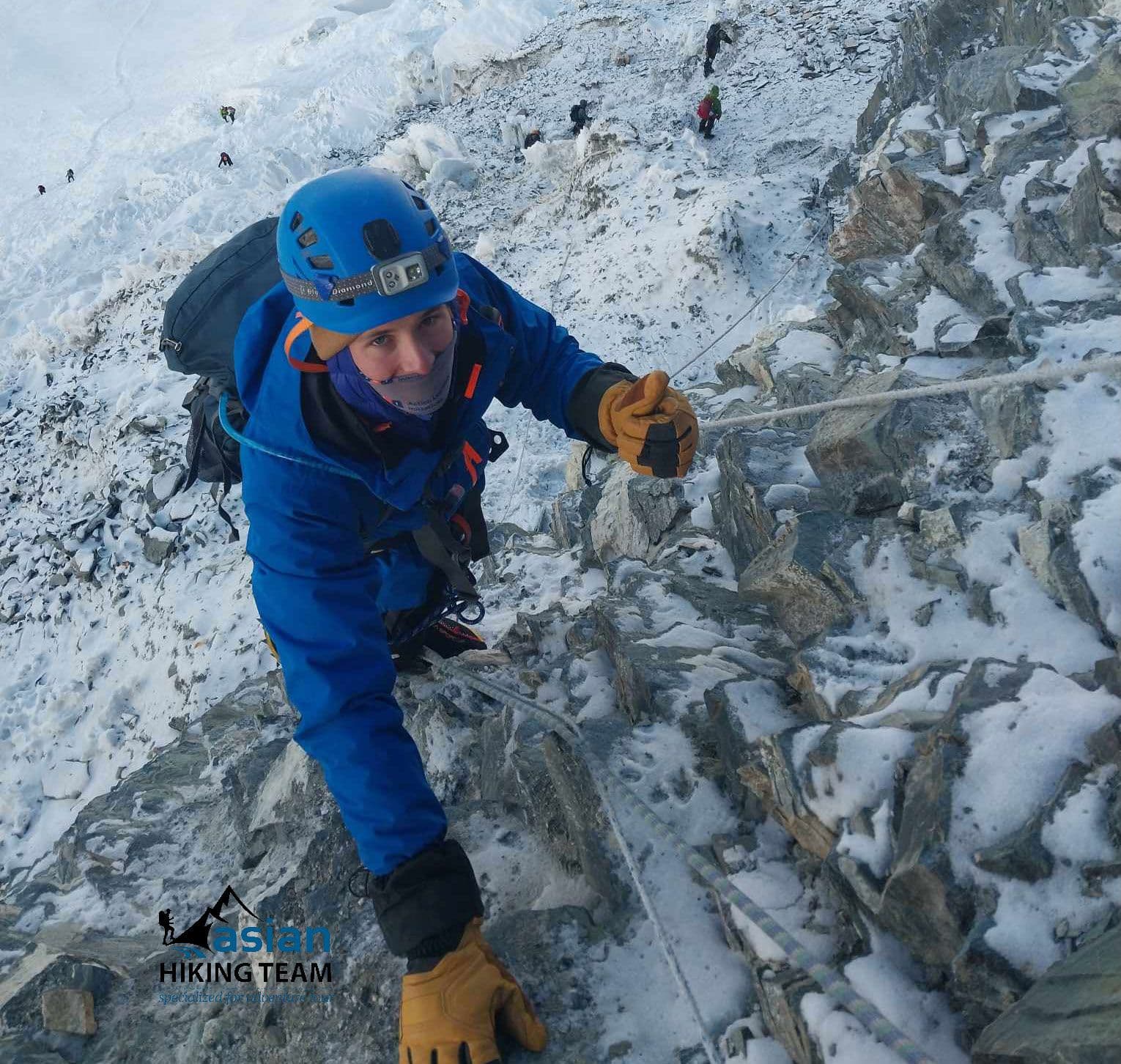A Journey through her Mountains, her Culture, Religion, and People

 by Evan Feenstra
by Evan FeenstraThere are few places in the world where nature, belief, ritual and daily life are so intertwined that entering a valley, climbing a ridge, or crossing a river feels like stepping into multiple dimensions at once. Nepal is one such place a land of soaring peaks, ancient temples, lively festivals, and people whose lives are shaped by the sky and the soil in alike measure.
Her Landscape and Mountains
Nepal is defined by its mountains. In the north lie eight of the world’s fourteen tallest peaks, including Mount Everest, but there are hundreds of other summits. Some shaking above 7,000 metres, many less famous but beautiful. The High Himalayan region is sharp, remote, hard, and magical: glaciers, snowfields, razor ridges, sky caves, and vast panoramas. Descending from the snow into the mid‐hills you find terraced farm villages, rhododendron forests, and winding rivers. Further down, the lowlands (Terai) bring a different richness thick forests, wildlife like rhinos and tigers, muggy air, flat lands that feed the country.
Trekking and climbing aren’t just sports here. They are ways to read the land. Trails like the Annapurna Circuit, Everest Base Camp, Manaslu Circuit, Makalu base camp, Kanchenjunga base camp, Mustang trek, Dolpa trek and many of the lesser‐known routes are portals: to beauty, to challenge, to meeting people whose lives are shaped by elevation, by cold, by remoteness. Some of the mountains climbing peaks Island peak, Mera peak, Bhokta Peak, Chulu Peak, Singu Chuli, Tent peak, Yala Peak are very health activities in Nepal. Some of the expedition such as Himlung, Baruntse, Ama Dablam, Annapura, Ratna Chuli, Nirekha, Kyazori peak etc are interesting for adventure seekers.
Her People
Nepal is home to over 60 ethnic groups, speaking more than 70 languages. The Sherpas are among the most famous high‐altitude dwellers, guides, mountaineers. But many other societies are equally vital to the tapestry: Gurungs, Magars, Tamangs, Rais, Limbus, Newars, Tharus, Majhi, Bote, Jirel — each with their own language, dress, dialect, and customs. Daily life for many is engrained in agriculture, yak or sheep herding, forest gathering, trade, or guiding. Mountain villages may be isolated; supplies come slowly; winters long; the air thin. Yet the people living at high altitude often have features (physiological adaptations) and ways of life uniquely shaped by their environment. One often‐overlooked richness is the mixture of hospitality and creativity: wood carving, weaving, handmade garments, storytelling, songs, and dances all flourishing in remote places. Villages are not just homes but alive culture‐laboratories where centuries of tradition live daily.
Her Religion and Faith
Religion in Nepal is pluralistic, overlapping, living. Hinduism is the largest faith tradition, Buddhism is deeply embedded, and many indigenous animists, shamanic, and nature‐worship practices persist, sometimes blended with the larger religions.
Hindu temples are everywhere: Pashupatinath in Kathmandu is one of the most sacred. In festivals like Dashain and Tihar, entire villages pulse with color, rituals, and emotion.
Buddhism, especially Tibetan forms, dominates in many mountainous regions. Monasteries, stupas, prayer flags, mani walls, chortens are landmarks on trails. The teachings of compassion, mindfulness and respect for nature shape daily decisions. Quiet old beliefs endure: nature spirits, ancestor worship, local deities who dwell in rivers, mountains, and trees. Among Kirati people, for instance, ancestral worship and the Mundhum tradition are central.
Her Culture, Festivals
Nepal’s culture is expressed vividly through festivals, ceremonies, dance, food, art, and social norms.
Festivals: Dashain and Tihar bring Hindus together in Nepal. In Tibetan Buddhist communities, Losar, Mani Rimdu, and other local festivals are important. Harvest festivals among Kirati groups (Chasok Tangnam etc.) celebrate the land and ancestors. Dance and Music: Folkloric dances like Maruni among the Magar, Ghatu in central regions, folk songs, bamboo flutes, drums, long horns — they all carry histories, stories, myths.
Cuisine: Varies by region. Dal‐Bhat (rice and lentils) is a staple almost everywhere. Higher altitude places rely more on barley, potatoes, yak products; in the Terai, rice, tropical fruits, fish and ingredients more typical of South Asian plains. Local spices, pickles, fresh milk tea, momos, local vegetables.
Art and Architecture: The Kathmandu Valley with its pagoda‐style temples and Newar architecture is world famous. Intricate wood carvings, metalwork, stone temples, stupas painted with bright colors. Even in remote villages, homes are built with local materials adapted to climate: sloping roofs for snow, thick walls, small windows, use of stone and timber.
Her Trekking and Climbing
For many, the draw is mountains and trekking. But the experience is far richer than physical challenge. Trekking is a chance to travel slowly, to walk through changing landscapes forests, alpine meadows, moraine, glaciers, ridgelines each bringing new views, new weather, new ways of life.
Climbing higher peaks introduces not just altitude, but cultural transitions: you begin in Hindu hill country, then Buddhist highlands, then almost no permanent human habitation except yak herders and high snow. Trekking also comes with responsibility: respect local customs (remove shoes before entering temples; walk around stupas in correct direction; modest dress), be mindful of waste, and support local guides and porters who know the land.
Why Nepal attraction you??
Nepal challenges you physically, yes. The altitude, the cold, the gap in amenities can test even experienced trekkers. But more than that, it challenges discernments about what nature means, what home means, how humans can live in harmony with harsh landscape and spiritual tradition.
There’s something humbling about sunrise on a Himalayan peak, or hearing monks chant across the valley at dusk, or sharing dal‐bhat (Dal Bhat Power 24 hours) in a remote lodge after a long day’s walk, binding you to people whose lives are written in soil, snow and faith. Nepal is not just a destination. For many travelers, it becomes a mirror: of hope, wonder, kindness, fortitude. It remains one of the rare places where walking, breathing, tasting, and seeing. All bring you nearer to understanding something deeply human.









